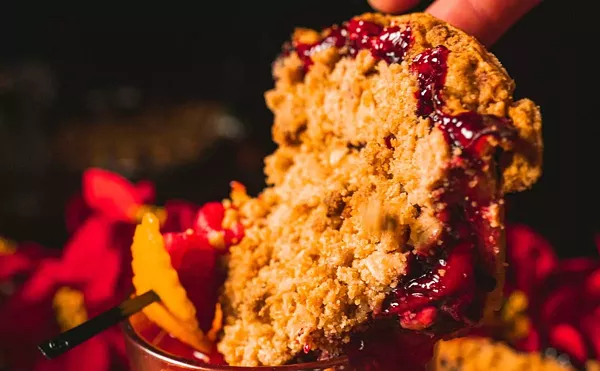
Audio By Carbonatix
[
{
"name": "GPT - Leaderboard - Inline - Content",
"component": "35519556",
"insertPoint": "5th",
"startingPoint": "3",
"requiredCountToDisplay": "3",
"maxInsertions": 100,
"adList": [
{
"adPreset": "LeaderboardInline"
}
]
}
]

As the gentle sunshine of spring begins to beckon us back outdoors, it’s time to rediscover the joys of a pitcher of sangria. You’ll find approximately 1 gazillion different recipes for sangria online, and you’ll probably end up more confused than enlightened after perusing the first few dozen. To simplify matters, we put a call in to Brian Croze, the lead wine consultant for more than 15 years at Holiday Market in Royal Oak. Croze says with a laugh that he gets asked how to make sangria more than 200 times a summer.
A pitcher of sangria roughly breaks down into a bottle of wine, a few pieces of fruit, perhaps a half-cup of liquor and a quarter-cup of sugar or other sweetener. The wine is just the foundation for your sangria, so any blend of white or red will do. For best results, Croze says, use only fresh, firm and seasonal fruit, and leave the skin on, as it can contain oils that have a tendency to add a great deal to your sangria. Combinations of citrus fruits are excellent for a springtime sangria made with red wine, he says, but you’ll likely want to use two oranges for every lime or lemon, since “the orange will be your ‘binder’ that brings all the flavor components together.” If you must add orange juice, Croze recommends squeezing it fresh yourself. He adds that, in summertime, sangrias made with stone fruits, such as peaches and apricots, and white wine, can be extremely refreshing.
Croze recommends adding your liquor and sweeteners sparingly at first, because it’s easier to add more than mourn adding too much. Liquor can “heat up” your sangria, and choosing what suits your taste may be most important. If adding vodka pleases you most, you might forgo expensive brandies or that pricey little bottle of Cointreau and Cachaça. After adding all these ingredients, Croze says you might want to add a quarter cup of sugar and kick it up from there.
Once all ingredients are added, you’ll want to let the concoction steep in the refrigerator for a while, but not too long, Croze says: “The longer you leave your fruit in, you’re allowing that fruit to macerate, and more than six hours or overnight is almost too long, because that fruit sometimes has a tendency to slime down.”
Also, he says, “Keep all ice on side. Don’t add anything to it that will water it down. If you do need to lean it out, do it with sparkling water or tap water.”
And finally, this bit of advice: “What makes sangria so much fun is that you’re putting together a personalized expression of what you like. Experiment with things you like, because the hardest one to make is the first one you do; after that, you’re a pro.”
Holiday Market is at 1203 S. Main St., Royal Oak; 248-541-1414.





